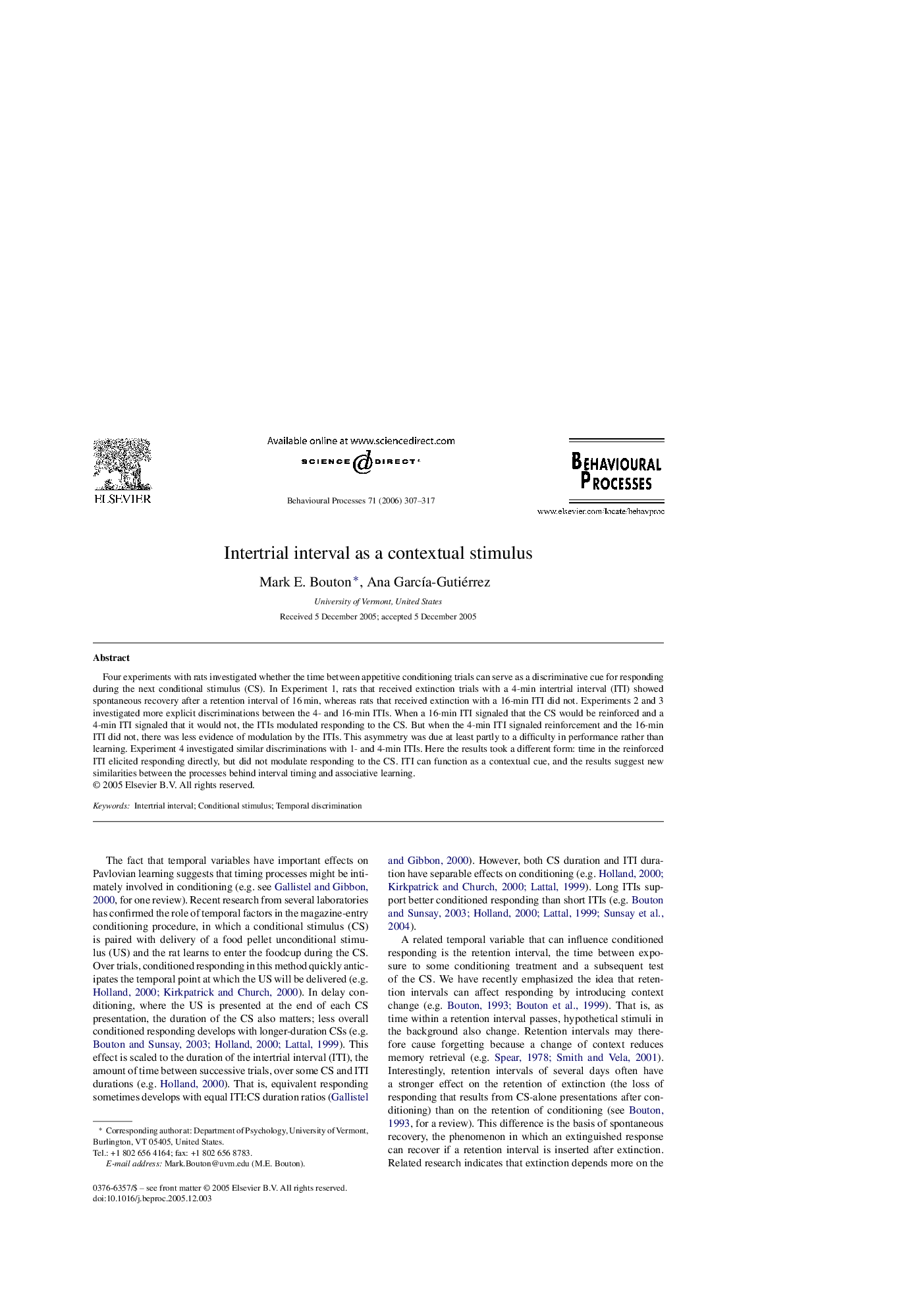| Article ID | Journal | Published Year | Pages | File Type |
|---|---|---|---|---|
| 2427888 | Behavioural Processes | 2006 | 11 Pages |
Four experiments with rats investigated whether the time between appetitive conditioning trials can serve as a discriminative cue for responding during the next conditional stimulus (CS). In Experiment 1, rats that received extinction trials with a 4-min intertrial interval (ITI) showed spontaneous recovery after a retention interval of 16 min, whereas rats that received extinction with a 16-min ITI did not. Experiments 2 and 3 investigated more explicit discriminations between the 4- and 16-min ITIs. When a 16-min ITI signaled that the CS would be reinforced and a 4-min ITI signaled that it would not, the ITIs modulated responding to the CS. But when the 4-min ITI signaled reinforcement and the 16-min ITI did not, there was less evidence of modulation by the ITIs. This asymmetry was due at least partly to a difficulty in performance rather than learning. Experiment 4 investigated similar discriminations with 1- and 4-min ITIs. Here the results took a different form: time in the reinforced ITI elicited responding directly, but did not modulate responding to the CS. ITI can function as a contextual cue, and the results suggest new similarities between the processes behind interval timing and associative learning.
